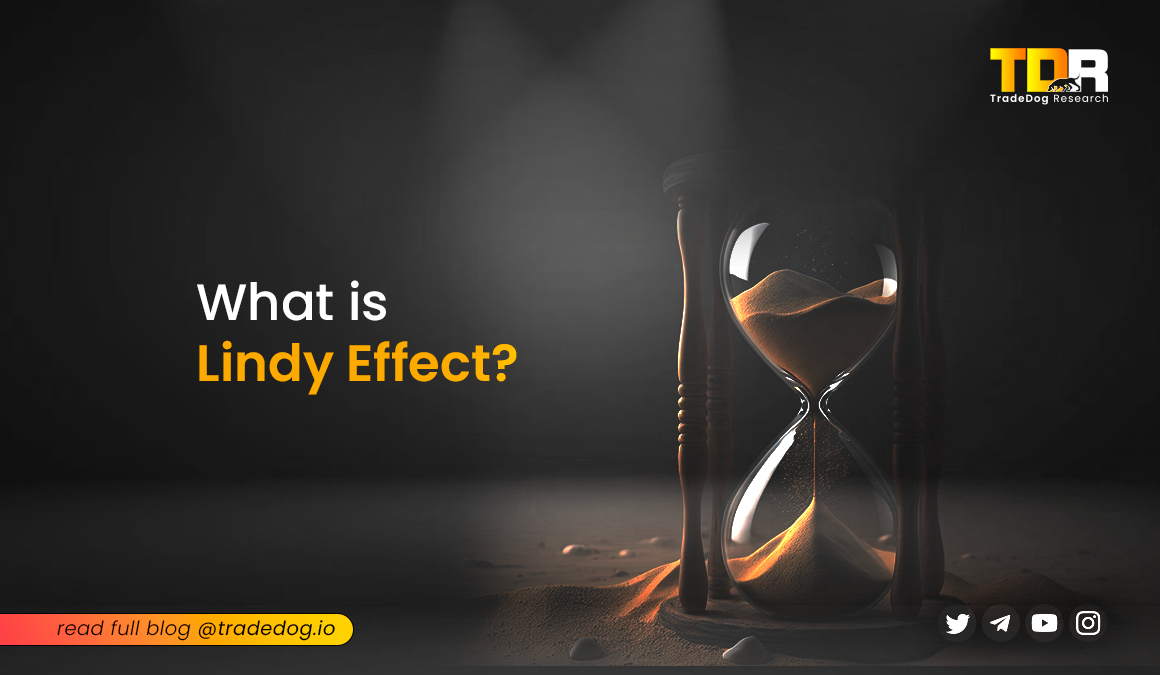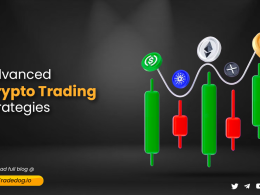Quick Links
Understanding the Lindy Effect holds paramount importance for investors navigating the intricate world of blockchain and cryptocurrency. This principle is focused on the longevity & resilience of entities based on their age. The Lindy Effect proposes that the future lifespan of an idea or technology is proportional to its current age. In simpler terms, the longer something has survived, the longer it’s likely to persist. Applied to crypto, this suggests that established projects which have sustained for a longer period amidst pressures and cycles, are likely to be long-term success than fledgling ventures.
The Lindy Effect empowers crypto participants by:
- Prioritizing Established Projects: By focusing on cryptocurrencies with a proven track record, investors can prioritize stability and potentially mitigate risk.
- Identifying Resilient Networks: The Lindy Effect sheds light on projects that have weathered market fluctuations and regulatory hurdles, hinting at their ability to endure future challenges.
- Encouraging Long-Term Thinking: The Lindy Effect discourages impulsive investment decisions and steers investors towards projects with a focus on long-term viability.
How the Lindy Effect Presents in Crypto?
Cryptocurrency’s ever-evolving landscape feels like a gamble. New projects emerge daily, vying for attention and investment. The Lindy Effect, however, offers a guiding principle. Simply put, the Lindy Effect suggests the longer something exists, the longer it’s likely to persist. In crypto, this translates to projects with demonstrable longevity having a higher chance of long-term success. Established giants like Bitcoin and Ethereum, around for over a decade, exemplify this. Their continued success suggests a project’s ability to endure is linked to robust functionality and a commitment to long-term viability.
The Lindy Effect goes beyond mere survival. It empowers informed decisions. Investors and developers can use it to assess new ventures. Projects with a longer history of security, decentralization, and a strong community are generally viewed as more trustworthy and resilient. Understanding a project’s core technology – its governance, consensus mechanisms, and network security – allows stakeholders to make discerning judgments about its long-term potential.
How does the Lindy effect apply to the Bitcoin blockchain?
Bitcoin & Ethereum serve as prime examples of the Lindy Effect at play in the blockchain world. Having survived and thrived for over a decade, Bitcoin’s age suggests it has a good chance of remaining relevant in the future. This resilience is further bolstered by its status as the first decentralized digital currency. Over the years, Bitcoin has weathered market volatility, technological advancements, and even governmental scrutiny. While regulations can significantly impact the cryptocurrency market, Bitcoin’s established position is evident in its consistent top ranking by market capitalization and user base with recently crossing all-time high over $73,000 and with institutional investors like Blackrock, Grayscale, & Fidelity among others now supporting it and launching Bitcoin ETFs. This dominance showcases Bitcoin’s potential for continued significance as a decentralized store of value and medium of exchange.
Comparison
Metcalfe’s law vs The Lindy effect
However, longevity isn’t the only factor that should be considered to judge a project’s potential. Technological leaps can disrupt established players, and regulations can change rapidly. Here is where Metcalfe’s law comes into play which focuses on network growth rather than its age or the time it has been active. These two principles are fundamentally different but yet complementary to evaluate a project’s potential.
| Aspect | Metcalfe’s Law | The Lindy Effect |
| Definition | The value of a network is proportional to the number of its users. | The expected lifespan of non-perishable entities is proportional to their current age. |
| Focus | Emphasizes network effects and connectivity within systems. | Highlights the age and robustness of entities. |
| Value Determination | The value increases exponentially with the addition of users. | Value is determined by historical longevity. |
| Application | Commonly used to assess the value of social media platforms, telecommunications networks, etc. | Applied across various domains, including literature, technology, and finance. |
| Perspective | Considers growth dynamics and value creation within networks. | Evaluates the durability and relevance of entities over time. |
| Example | Social media platforms like Facebook are valuable because of their large user base | Bitcoin’s age suggests it has a good chance of remaining relevant |
| Key Insight | Focuses on the significance of network effects and user participation. | Highlights the importance of historical performance and resilience. |
Pros and Cons
Pros
- Predictive Power: The Lindy Effect offers a valuable heuristic for predicting the future lifespan of non-perishables based on their current age.
- Informed Decision-Making: It guides investors, developers, and decision-makers towards entities with a proven track record, promoting informed choices.
- Risk Mitigation: By favoring established entities, it helps mitigate risks associated with market volatility and regulatory uncertainty.
- Confidence Booster: The Lindy Effect provides a tangible measure of reliability and endurance, instilling confidence in informed decision-making.
- Long-Term Outlook: It encourages a long-term perspective by highlighting the importance of historical performance and sustainability, fostering stability and growth.
- Resilience Benchmark: The Lindy Effect serves as a benchmark for resilience, helping stakeholders identify entities likely to withstand future challenges and remain relevant.
Cons
- Blind Spot for Innovation: The Lindy Effect can create a blind spot for the potential of disruptive innovation in newer projects, leading to missed opportunities.
- Not a Guarantee of Future Success: Age alone doesn’t guarantee immunity from future challenges like regulatory hurdles or technological obsolescence. Ongoing evaluation is crucial.
- Subjectivity in Interpretation: Interpretation of historical performance can be subjective, leading to variations in assessments of longevity and reliability.
- Limited Scope: The Lindy Effect focuses primarily on age as a predictor, potentially neglecting other factors that influence value and viability.
- Delayed Adaptation: Over Reliance on past performance might lead to delayed adaptation to changing market dynamics and emerging trends.
- False Sense of Security: Excessive reliance on the Lindy Effect can create a false sense of security, potentially leading to complacency and missed opportunities or overlooked risks.
Conclusion
The Lindy Effect offers a valuable compass. By prioritizing established projects with a history of overcoming challenges and fostering strong networks, investors can navigate the landscape with greater confidence. While age alone isn’t a guaranteed predictor of success, the Lindy Effect serves as a reminder that past performance can be a powerful indicator of future potential, helping us identify projects with a higher chance of thriving in the dynamic world of cryptocurrency.









